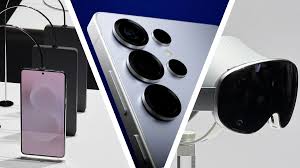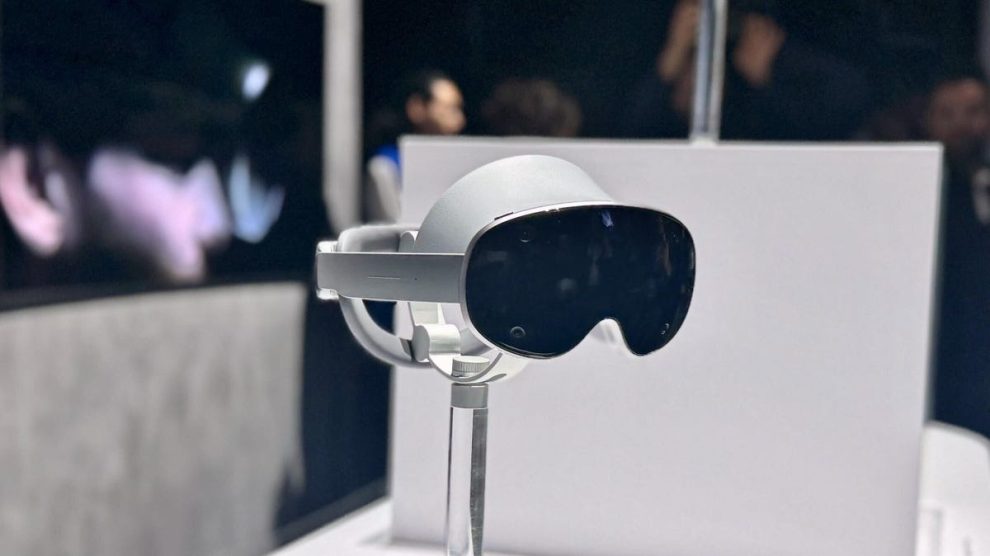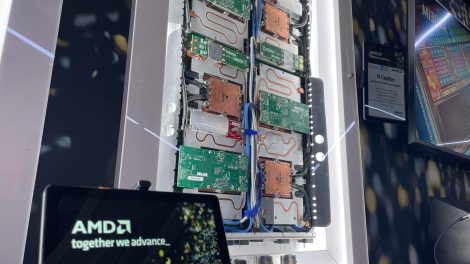Samsung’s latest Galaxy smartphones have drawn considerable attention, not just for their sleek designs and powerful features but for the groundwork they lay for the future of augmented reality (AR) and virtual reality (VR) technology. These devices represent more than just a leap in smartphone capabilities—they are part of a larger vision for a connected ecosystem that includes headsets, glasses, and immersive experiences. As these advancements unfold, you’ll find that the devices in your hand could soon become the gateway to entirely new ways of interacting with technology.

The announcement of the Galaxy series heralds a significant step forward for Samsung’s ambitions in AR and VR. While the immediate focus remains on delivering a premium smartphone experience, the underlying technologies point to the company’s long-term plans to integrate extended reality (XR) into everyday life. This strategic direction aligns with growing global interest in immersive technologies and their potential applications across industries, from entertainment to education.
One of the most striking aspects of the new Galaxy lineup is its advanced hardware, which provides the foundation for future AR and VR capabilities. Samsung has equipped these devices with powerful processors, optimized graphics capabilities, and enhanced displays, ensuring they can handle demanding applications with ease. These specifications are not just about delivering a superior smartphone experience today; they are also about preparing for the next wave of technological innovation.
The display technology in Samsung’s latest smartphones stands out as a critical enabler for immersive experiences. With high-resolution AMOLED screens and adaptive refresh rates, these devices are designed to deliver stunning visuals that are both vibrant and detailed. These features are particularly important for AR and VR applications, where clarity and responsiveness are essential to creating a seamless user experience. Whether you’re exploring a virtual world or using AR tools for navigation, the display quality will play a significant role in your overall experience.
In addition to the hardware, Samsung’s focus on software optimization is equally noteworthy. The latest Galaxy devices come with updated versions of Android and Samsung’s proprietary One UI interface, both of which have been tailored to support AR and VR applications. These software enhancements ensure that the devices can deliver smooth performance while running complex applications. Furthermore, Samsung’s ongoing collaboration with developers and content creators means that you can expect a growing library of AR and VR experiences to become available in the coming months and years.
Samsung’s decision to integrate AR and VR capabilities into its smartphones is not just about technological innovation; it’s also a strategic move to stay ahead in a competitive market. The company’s vision extends beyond standalone headsets or glasses, focusing instead on creating a seamless ecosystem where smartphones act as the central hub for various devices. This approach not only simplifies the user experience but also lowers the barrier to entry for consumers who are new to AR and VR technologies.
As you explore the possibilities offered by Samsung’s latest smartphones, it becomes clear that these devices are designed with versatility in mind. The hardware and software innovations make them well-suited for a wide range of applications, from gaming and entertainment to productivity and education. For example, the powerful processors and advanced graphics capabilities ensure that you can enjoy immersive gaming experiences with minimal latency. Similarly, the high-resolution cameras and AR tools can be used for educational purposes, such as virtual field trips or interactive lessons.
The role of connectivity in enabling these experiences cannot be overstated. Samsung’s latest devices come with support for 5G networks, ensuring fast and reliable connections even when streaming high-quality content or participating in multi-user virtual environments. This level of connectivity is crucial for AR and VR applications, which often require significant data transfer and low latency to function effectively. As 5G networks continue to expand globally, you can expect these technologies to become even more accessible and practical for everyday use.
Samsung’s emphasis on sustainability also plays a role in its vision for the future. The company has made efforts to reduce the environmental impact of its devices, from using recycled materials in production to offering trade-in programs for older models. By adopting these practices, Samsung aims to create a more sustainable ecosystem that supports technological innovation without compromising on environmental responsibility. This commitment to sustainability is particularly important as the demand for electronic devices continues to grow.
The introduction of new Galaxy smartphones is just one piece of Samsung’s broader strategy for AR and VR. The company has also been investing in partnerships and collaborations to drive innovation in this space. For example, Samsung has been working with leading technology firms and developers to create new tools and applications for AR and VR. These efforts are expected to result in a range of products and services that complement the capabilities of the Galaxy lineup, further enhancing the user experience.
As you consider the potential of Samsung’s latest devices, it’s important to recognize the broader implications of these advancements. The integration of AR and VR technologies into everyday life has the potential to transform how you interact with the world around you. From virtual meetings and remote collaboration to immersive entertainment and educational experiences, the possibilities are virtually limitless. By positioning its smartphones as the gateway to these experiences, Samsung is setting the stage for a new era of connectivity and innovation.
To provide a clearer picture of the capabilities of Samsung’s latest Galaxy smartphones, here’s a detailed comparison of their key features:
| Feature | Galaxy S25 | Galaxy S25+ | Galaxy S25 Ultra |
|---|---|---|---|
| Display | 6.1″ AMOLED | 6.6″ AMOLED | 6.8″ AMOLED |
| Resolution | FHD+ | FHD+ | QHD+ |
| Refresh Rate | 120Hz Adaptive | 120Hz Adaptive | 120Hz Adaptive |
| Camera System | Triple | Triple | Quad (200MP main) |
| Processor | Exynos/Snapdragon | Exynos/Snapdragon | Exynos/Snapdragon |
| Connectivity | 5G Support | 5G Support | 5G Support |
This table highlights the range of options available within the Galaxy series, ensuring there’s a device to meet various needs and preferences. Whether you’re looking for a compact smartphone or a feature-packed flagship, Samsung’s latest lineup offers a compelling choice.
As the market for AR and VR technologies continues to grow, Samsung’s commitment to innovation and user experience positions it as a leader in this space. By combining cutting-edge hardware, optimized software, and a vision for the future, the company is paving the way for a new era of connectivity and interaction. For you, this means access to devices that not only meet your current needs but also prepare you for the possibilities of tomorrow.










Add Comment